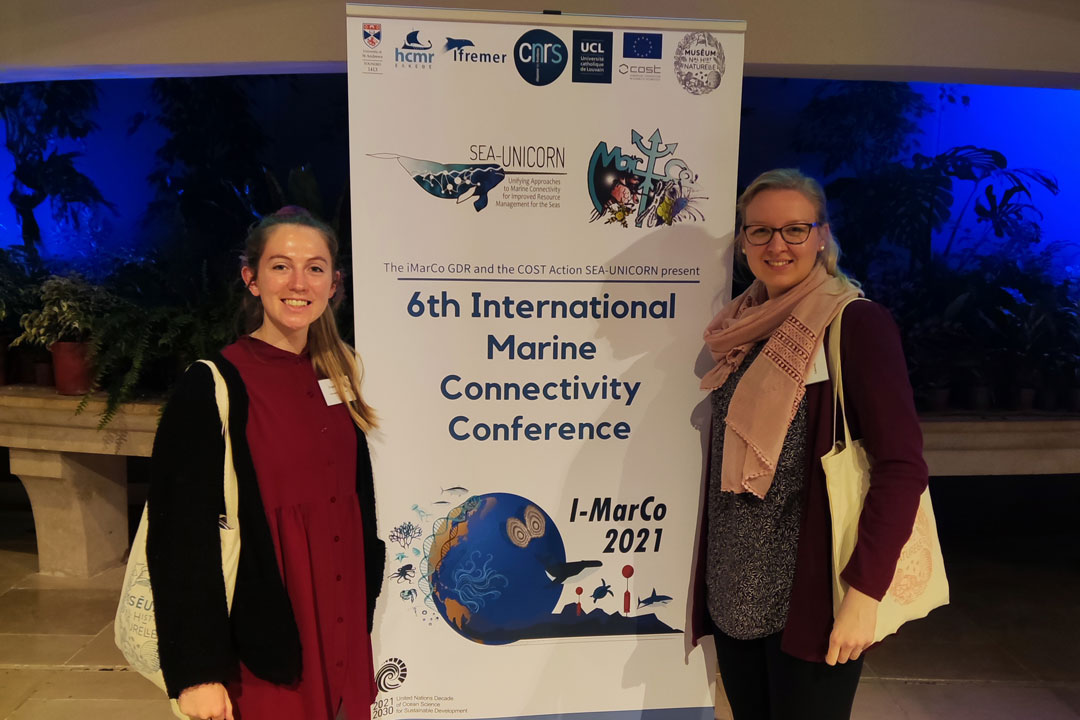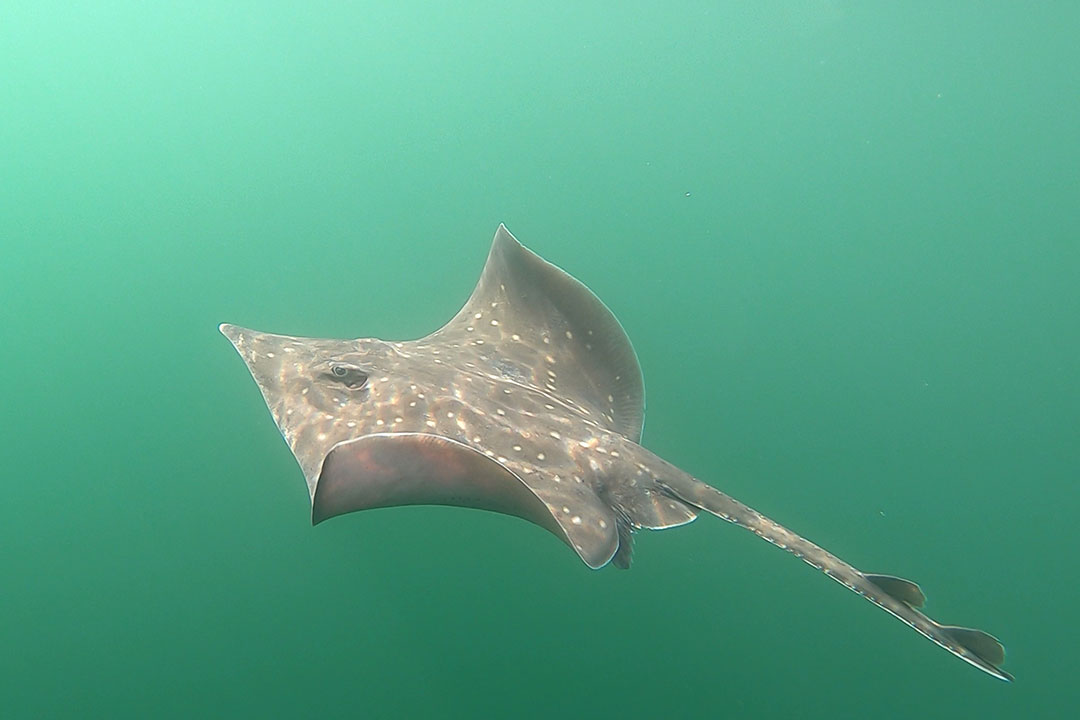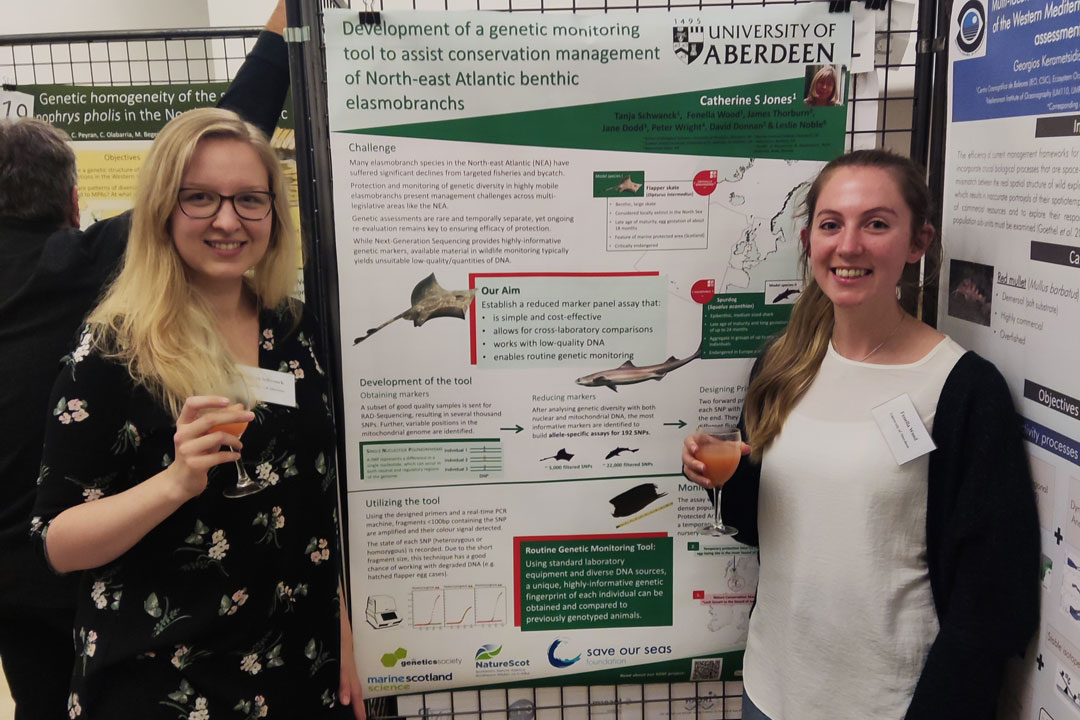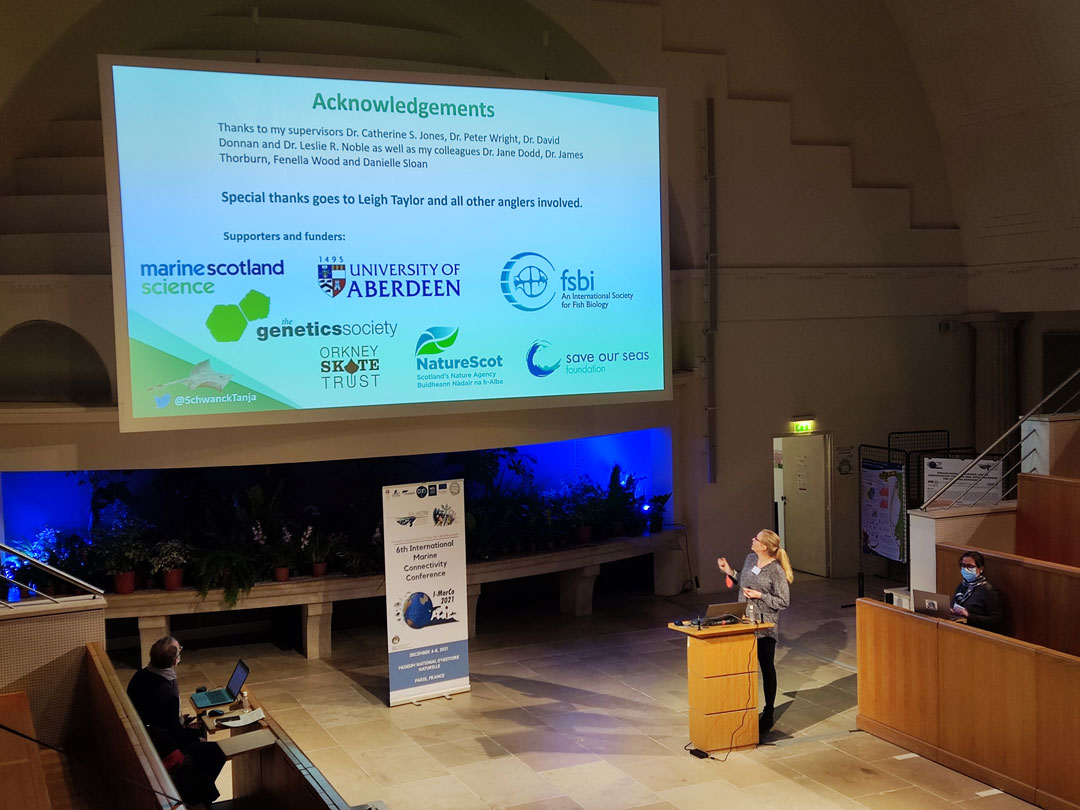Presenting at the 6th International Marine Connectivity Conference
While we, Fenella and Tanja, are spending most of our time obtaining and analysing genetic data from our elasmobranch species, there comes a time when we get to share our work with others. Especially inspiring for us as PhD students are scientific conferences, where experts from our field present their new research, discuss pressing issues and give valuable feedback to colleagues. After sticking with virtual meetings over the past 1½ years, we were delighted to be able to attend an in-person conference in Paris in early December 2021. The 6th International Marine Connectivity Conference offered a great opportunity to hear about and discuss genetic diversity and connectivity among marine animals, and how we can use knowledge generated by science for sustainable management and conservation.
 The talks were as diverse as marine wildlife itself. Scientists across all career levels presented their research in marine connectivity, including modelling of larval dispersal, measuring the risk of harbours being invaded by non-native species, and how isotope analysis could identify nursery sites that animals originate from. In addition to these, a major topic was the use of genetic techniques to investigate marine connectivity, which tied in closely to the work of our group at the University of Aberdeen, led by fellow SOSF project leader Cath Jones.
The talks were as diverse as marine wildlife itself. Scientists across all career levels presented their research in marine connectivity, including modelling of larval dispersal, measuring the risk of harbours being invaded by non-native species, and how isotope analysis could identify nursery sites that animals originate from. In addition to these, a major topic was the use of genetic techniques to investigate marine connectivity, which tied in closely to the work of our group at the University of Aberdeen, led by fellow SOSF project leader Cath Jones.
Fenella Wood presented a poster showing preliminary results of her genetic analysis of spurdog populations, including samples from the Isle of Scilly aggregation she’s investigating more closely in her SOSF project British shark life: are spurdog siblings sticking together?. She used this opportunity to talk to peers about aspects of her PhD project, gaining valuable feedback regarding her aims and approaches.

A female flapper skate being released after catching and sampling in the Marine Protected Area Loch Sunart to the Sound of Jura. Photo © Fenella Wood
Tanja Schwank gave a talk about her work on flapper skates, focusing on the genetic diversity of a marine protected area and its connection to outside populations. Part of the presented data resulted from the SOSF project Flapper skate family ties, offering valuable insights into the relatedness of these critically endangered animals. Tanja found limited intermingling of animals from the marine protected area with animals from other places in the North-east Atlantic, which was met with lots of interest and sparked questions about flapper skate behaviour and conservation management.
 Last but not least, a poster introducing Catherine Jones’ Keystone SOSF project A genetic tool to help monitor sharks and skates in the North-east Atlantic made its way to the conference, with Cath unfortunately unable to attend in-person due to Covid-related travel restrictions. It was great to tie all our projects together when chatting with the attendees, showcasing our genetic approaches for elasmobranch conservation.
Last but not least, a poster introducing Catherine Jones’ Keystone SOSF project A genetic tool to help monitor sharks and skates in the North-east Atlantic made its way to the conference, with Cath unfortunately unable to attend in-person due to Covid-related travel restrictions. It was great to tie all our projects together when chatting with the attendees, showcasing our genetic approaches for elasmobranch conservation.
All in all, this has been a very lovely opportunity for us to not only show and discuss our work, but also connect with like-minded people from all over the world. We are convinced that conservation efforts will be most efficient if we exchange knowledge with other colleagues and communities.

